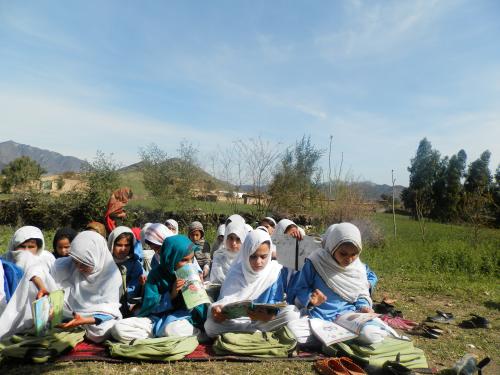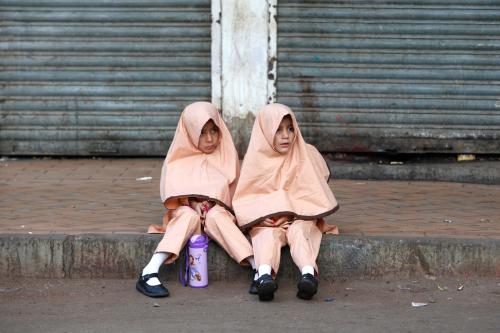The factors hindering girls’ education in Pakistan are multifaceted. The financial situation of families, cultural bias, tradition, and concerns for the safety of girls play a major role and any combination of these factors makes the situation for girls’ education even graver. The parity index for education in Pakistan is skewed at multiple levels with inequalities in both educational inputs and outputs persisting across regions, genders, and different income groups. This situation is reflected in basic indicators for education, especially for girls as out of 31 million girls of primary school age who are out of school worldwide, more than 4.5 million live in Pakistan.
Despite numerous challenges for girls’ education, there is evidence of an increasing demand for girls’ education in Pakistan, with the ratio of female to male primary enrollment in Pakistan rising from 52 percent in 1991 to 88 percent in 2013. In remote, underserved, and conflict-prone areas this demand is usually met by non-state providers. Home-based and community-based schools provided by the nonprofit sector have become the prevalent models for mainstream educational services. These models provide culturally acceptable, flexible, and feasible options for education that are relevant to the specific contextual needs of girls and their families. These models are often better suited for girls, because of their geographic and cultural proximity, resulting in social acceptance of the service providers; feasible accountability resting with the community adding to the trustworthiness of schools felt among parents; and flexibility and creativity in using school inputs like to meet local needs like gender and qualifications of teachers, teaching materials, subjects and school timings.
There are a number of nongovernmental organizations and individuals like BRAC in Bangladesh and Escuela Nueva in Colombia providing contextualized solutions for educating underserved and inaccessible communities where girls are the most disadvantaged. These establishments accommodate the diversity of stakeholders’ backgrounds, needs, and circumstances and provide customized education services. Despite being successful and exemplary, these initiatives, dispersed in pockets throughout Pakistan, remain limited in reach. To facilitate learning across the country through multiple pathways, it is vital to ensure these innovative models are sustainable and scalable. Here the lack of policy and system support and low community engagement are crucial missing links. Furthermore, the adaptability and flexibility of these models—what makes them effective at accommodating the needs of communities—also makes them hard to scale and especially difficult to fit into existing government structures.
As an Echidna scholar at Brookings, my research is framed within the argument that models for girls’ education must be localized and delivered through adaptable services, contextualized approaches, and flexible strategies. Drawing from a series of case studies, I will explore two issues. First, I will examine the significance of using localized approaches for improving girls’ access to education in three different contexts: i) in a state of fragility, ii) in an urban slum area, and iii) in a socially conservative area resistant to education provision for girls. Second, I will investigate the implications for scaling up and sustaining these contextually specific innovative models for girls’ education. To this end, I will explore diverse social, cultural and financial environments and contextualized issues of girls’ education in Pakistan, which can often get steamrolled when packaged into national scenarios.
To provide evidence that could support the formulation of a national strategy for scaling up community-based schools for girls in Pakistan, this research will address both policy gaps and community engagement issues in order to define new ways of establishing institutional partnerships among the public, private, and civil society sectors.





Commentary
Contextualizing education services: Possibilities for disadvantaged girls in Pakistan
September 28, 2015